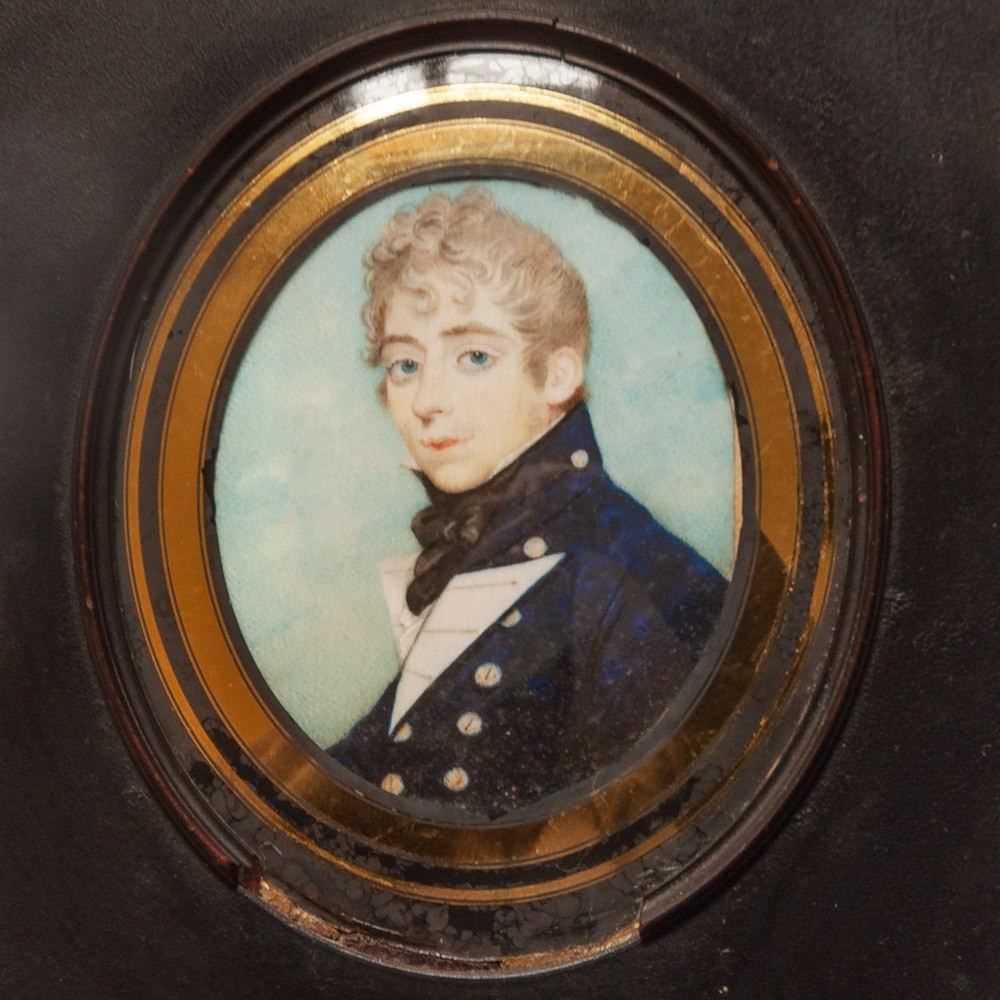Hopewell Hayward Budd was the fourth child of William and Ann Budd, born on 27 Jun 1780 in Uxbridge.
He joined the Navy in March 1796, aged 15. In September 1798 Midshipman Budd joined Tigre, as 74-gun man-of-war, commanded by one of the most prominent Naval leaders of the time, (and with whom he was to spend most of his Naval career) Sidney Smith. He saw service in the defence of St Jean D’Acre (Napoleon Bonaparte’s first land defeat) and shortly afterwards assisted the escape of fugitives at Aboukir following Bonaparte’s defeat of the Turkish Army there. He then saw service on the Nile in conjunction with the British Army at the capture of Cairo, the surrender of Alexandria and the evacuation of Egypt by the French forces in 1800. In 1803 he is with Smith’s squadron off Flushing fighting the French as an acting Lieutenant and in 1804 is appointed commander of the cutter Lord Nelson, stationed off Flushing in a blockade. Whilst commanding Lord Nelson he spotted 4 enemy ships stealing to Ostend and gave pursuit. The vessels were brought to close action with two of them driven ashore and two completely destroyed. On 23 March 1804 he recaptured the Ship Young William, took her crew on board as prisoners and sent the Brig back to Dover under escort. Shortly afterwards, aboard Cruiser, he was engaged in a six and a half hour battle against a 59-strong French flotilla in which several enemy ships were sunk, more than a dozen driven ashore and the remainder escaped - for which he was mentioned in dispatches by Sidney Smith. Following further service against the French he joined Pompee (another 74-gun man-of-war) under Lord Collingwood off Cadiz.
In July 1806 he landed with the Army to do battle with the French at Maida in Calabria, Italy. Under command of Brigadier-General Oswald, Lieutenant Budd was ordered to remove a 26 pounder gun which the French had spiked and left. In executing this order at night and under French musket fire and Grape Shot and whilst manhandling the gun with ropes, it fell on him and crushed his chest severely, an injury with was to plague him for the rest of his life. Despite his injuries he continued service with Sidney Smith in the Mediterranean and was present on Pompee at the forcing of the Dardanelles and destruction of the Turkish Fleet there by Sir John Duckworth’s fleet in february 1807. By 1808 Lieutenant Budd is again serving with Sidney Smith, this time in Rio de Janeiro. But his failing health forced him to return to England and retire in 1809. He was subsequently to be appointed the honorific title of Commander in 1836.
His Naval career over, Hopewell married a daughter of John Tuckey (a thousand acre farmer in Winterbourne), Sophia, and settled into an agricultural life in Winterbourne Bassett, Wiltshire, taking over his father in-law's farm upon the former's death. He applied himself to the cultivation of 1,000 acres and gained a reputation for innovation and courage during many depressed years. He was noted for his popularity and hospitality at home in Manor Farm.
It is said that ‘he ruled the parish with a sort of quarter-deck discipline and never were people kept in better order.’ In December 1830 a letter by the Magistrates of Malborough and Swindon to the Secretary of State for the Home Department, Lord Melbourne, testifies to HH Budd’s courage and leadership in quelling a riot of some 70 labourers (a deed about which Lord Melbourne wrote to the First Lord of the Admiralty, recommending him for promotion to Commander). Hopewell had 6 sons and 6 daughters with Sophia, and retired to Buck Hill in Calne (close to his elder sister Ann who lived there). He died on 23 November 1869, aged 89, having lived a grand and active life.
Commander Hopewell Hayward Budd R.N.
HH Budd aged 84
Cameo of Lieutenant HH Budd
HH Budd's Logbook as commander of HMS Lord Nelson detailing the capture of the Brig Young William on 23 Mar 1804
Hopewell, Henry and Sophia Budd graves. Manor Farm house in the background, Winterbourne Bassett



